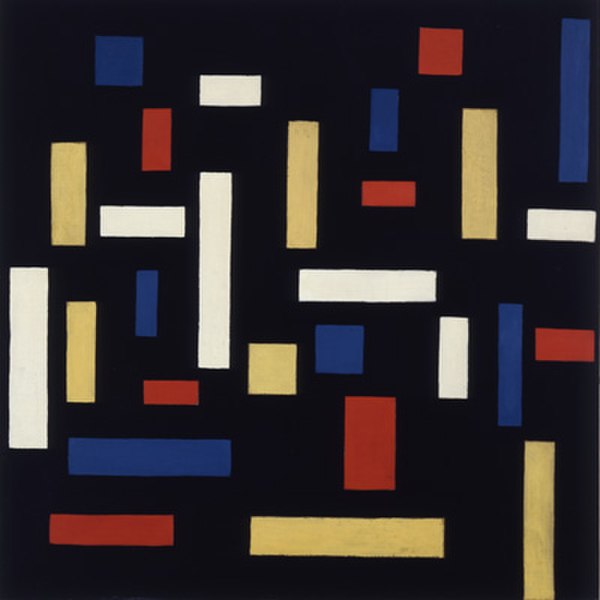De Stijl, incorporating the ideas of Neoplasticism, was a Dutch art movement founded in 1917 in Leiden, consisting of artists and architects. The term De Stijl is also used to refer to a body of work from 1917 to 1931 created in the Netherlands. Proponents of De Stijl advocated pure abstraction and universality by a reduction to the essentials of form and colour. They simplified visual compositions to vertical and horizontal, using only black, white and primary colors.
Theo van Doesburg, Composition VII (the three graces), 1917
De Stijl November 1921, Dadaism
De Stijl Manifesto I, November 1918
Red and Blue Chair, designed by Gerrit Rietveld, version without colors 1919, version with colors 1923
Neoplasticism, known in Dutch as Nieuwe Beelding, is an avant-garde art theory that arose in 1917 and was employed mainly by Dutch De Stijl artists. The most notable advocates of the theory were the painters Theo van Doesburg and Piet Mondriaan. Neoplasticism advocated for an abstract art that had been purified by applying the most elementary principles through plainly rational means. Thus, a painting that adhered to neoplastic theory would typically consist of only simple shapes and primary colors.
Theo van Doesburg Composition VII (the three graces), 1917




